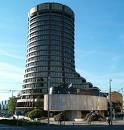| Online: | |
| Visits: | |
| Stories: |
One Bank to Rule Them All: The Bank for International Settlements
One Bank to Rule Them All: The Bank for International Settlements
Global Research, October 09, 2015

Please note that this article is being published as a three-part series on Occupy.com.
The Bank for International Settlements (BIS) is an organization that is shrouded in mystery, mainly due to the fact that the majority of people don’t even know of its existence. According to the BIS itself, the main purpose of the Bank is to “to promote the cooperation of central banks and to provide additional facilities for international financial operations” and “act as trustee or agent in regard to international financial settlements entrusted to it under agreements of the parties concern.”[1] This means that the BIS is to have the central banks work with one another to facilitate international operations and to oversee any international financial settlements.
 The Bank has a Board of Directors, which “may have up to 21 members, including six ex officio directors, comprising the central bank Governors of Belgium, France, Germany, Italy, the United Kingdom and the United States. Each ex officio member may appoint another member of the same nationality. Nine Governors of other member central banks may be elected to the Board.”[2] BIS also has a management wing in the form of a General and Deputy General Manager, both of whom are responsible to the board and supported by Executive, Finance, and Compliance and Operational Risk Committees.[3]
The Bank has a Board of Directors, which “may have up to 21 members, including six ex officio directors, comprising the central bank Governors of Belgium, France, Germany, Italy, the United Kingdom and the United States. Each ex officio member may appoint another member of the same nationality. Nine Governors of other member central banks may be elected to the Board.”[2] BIS also has a management wing in the form of a General and Deputy General Manager, both of whom are responsible to the board and supported by Executive, Finance, and Compliance and Operational Risk Committees.[3]
However, its purpose has changed and evolved over the decades, however, it has always been a club for central bankers, yet in many ways it can aid some countries more than others.
The origins of the BIS lie in the United States, specifically New York City. The individuals involved were international bankers who, despite past differences, “worked together to establish a world financial order that would incorporate the federal principle of the American central banking system.”[4] Specifically among them were people such as “Owen D. Young, J. Pierpont Morgan, Thomas W. Lamont, S. Parker Gilbert, Gates W. McGarrah, and Jackson Reynolds, who, in conjunction with the Federal Reserve Bank of New York, sought to extend the principle of central bank cooperation to the international sphere.”[5]Before delving any further into the creation of the Bank, it is necessary to examine some of the more notable of these individuals to better understand why they would be involved in the creation of an international bank.
Owen D. Young was already in good with the US government as he, “with the cooperation of the American government and the support of GE, organized and became chairman of the board of the Radio Corporation of America” and “in subsequent years he engineered a series of agreements with foreign companies that divided the world into radio zones and facilitated worldwide wireless communication”[6] Young had a strong belief that global radio service and broadcasting were important for the advancement of civilization. In 1922, Young became chairman of General Electric, and along with GE President Gerard Swope, “urged closer business-government cooperation and corporate self-regulation under government supervision.”[7]
 During the 1920s, Young became involved in international diplomacy as the foreign affairs spokesman for the Democratic Party. At the behest of then-Secretary of State, Charles Evan Hughes, Young and Charles Dawes, a banker, were recommended to the Allied Reparations Commission in order to deal with the breakdown in Germany’s reparations payments following the First World War.The Commission resulted in the Dawes Plan which allowed for “Germany’s annual reparation payments would be reduced, increasing over time as its economy improved; the full amount to be paid, however, was left undetermined. Economic policy making in Berlin would be reorganized under foreign supervision and a new currency, the Reichsmark, adopted.”[8] Young viewed improving the world financial structure as important to “the very survival of capitalism” and furthermore he “sought rather the ‘economic integration’ of the world which would prepare the way for ‘political integration’ and lasting peace.”[9]
During the 1920s, Young became involved in international diplomacy as the foreign affairs spokesman for the Democratic Party. At the behest of then-Secretary of State, Charles Evan Hughes, Young and Charles Dawes, a banker, were recommended to the Allied Reparations Commission in order to deal with the breakdown in Germany’s reparations payments following the First World War.The Commission resulted in the Dawes Plan which allowed for “Germany’s annual reparation payments would be reduced, increasing over time as its economy improved; the full amount to be paid, however, was left undetermined. Economic policy making in Berlin would be reorganized under foreign supervision and a new currency, the Reichsmark, adopted.”[8] Young viewed improving the world financial structure as important to “the very survival of capitalism” and furthermore he “sought rather the ‘economic integration’ of the world which would prepare the way for ‘political integration’ and lasting peace.”[9]




